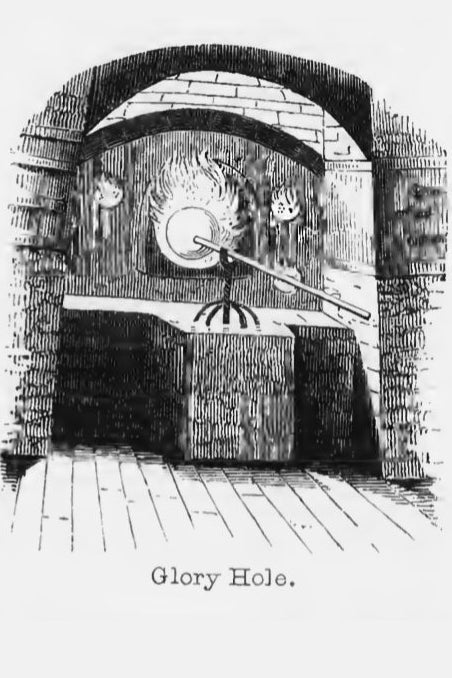This story is a head shaker. I really and truly thought it was a joke. Sadly, it is not.
WOW… This WORLD is getting more and more insane every second. My head is spinning. I just can’t even come close to staying up on the news. It is overwhelming.
People if you cannot see that this world has gone to HELL… then you might as well get what you can, while you can because you are beyond hope.
ALMIGHTY GOD/THE CREATOR/OUR HEAVENLY FATHER/YaHOVAH will not be mocked. You can bet your life on it. He will be bringing all of this down soon and very soon.
Get a load of this, and be bewildered.


In order to help minimize the spread of the Wuhan coronavirus (COVID-19),the Canadian government is now recommending that people seek out anonymous sex with strangers at so-called “glory holes,” which are supposedly less risky than real sex with identifiable humans.
The British Columbia Centre for Disease Control (CDC)actually issued new “safety recommendations” urging the general public to look for random holes drilled into the walls of bathroom stalls, through which various makeshift sexual relations can occur without mouth-to-mouth contact.
If one of these holes is not present in a bathroom stall, then the BC CDC recommends that people drill one themselves to help create more “safe sex” options during the plandemic.
“Use barriers, like walls (e.g., glory holes),that allow for sexual contact but prevent close face-to-face contact, the Canadian version of our own Centers for Disease Control and Prevention (CDC) advises on its website.
The agency is further urging people to avoid kissing and other forms of “saliva exchange,” and if they have to have real sex ,to choose sexual positions “that limit face-to-face contact.”
The best form of safe sex, the agency further claims,is masturbation, because “you are your safest sex partner,” it contends.
Masturbating by yourself (solo sex) will not spread COVID-19,” the BC CDC insists.
“Health officials” in New York City also suggest glory holes as a “safer sex” option
While such extreme lunacy is oftentimes exclusive to our neighbors to the north, we are saddened to report that so-called “health officials” in New York City have also made the suggestion that anonymous glory hole encounters in public restrooms are a great way to help “flatten the curve.”
In a directive, the NYC government encourages local residents to“be creative with sexual positions and physical barriers, like walls, that allow sexual contact while preventing close face-to-face contact.”
The state of Michigan, which continues to suffer under aggressive and restrictive lockdown orders from Governor Gretchen Whitmer, is also siding with perversion as a “safer sex” option during the plandemic. Unbelievably, Whitmer allowed a homosexual swingers club to continue operating even as she forced churches to close.
According to reports, Whitmer and her regime chose to look the other way as Club Tabu, a popular underground LGBTQ nightclub in Lansing, continued to operate during the pandemic.
On its website, Club Tabu describes itself as a “private party” where homosexual sex is allowed “in the privacy of your own accommodations.”This facility is said to have numerous glory holes, allowing LGBTQs the ability to “engage in illicit, dangerous and perverted sex,” according to Big League Politics.
“Michigan Attorney General Dana Nessel is an LGBT reprobate, so that may be why this den of iniquity is given a pass while hard-working Christian small business owners are targeted for elimination,” this news outlet further reported about this filthy club.
Meanwhile, religious congregants in California remain under strict orders by Governor Gavin Newsom not to congregate or gather,either indoors or outdoors. Even as his own PlumpJack winery in California’s most exclusive wine-producing region remains fully and exclusivelyopen to the public,Newsom is demanding that churchgoers avoid singing with one another because this could spread the Wuhan coronavirus (COVID-19), he insists.
“Western Civilization has progressed to a stage that makes Sodom and Gomorrah look like a church picnic,” notes Big League Politics‘ Shane Trejo.
To keep up with the latest news about how the Wuhan coronavirus (COVID-19) plandemic continues to be used as a “public health” excuse to restrict law-abiding, churchgoing American citizens from living normal lives, even as reprobates are free to do whatever they want, be sure to check out Evil.news.
Not convinced this was a real story, I had to look it up and the following is what I found.
spacer
glory hole – noun
b: an opening directly into the interior of such a furnace specifically : BOTTOMING HOLE
2: a receptacle (as a box or cupboard) or area into which odds and ends are put haphazardly and in no particular order
4: an opencut or funnel-shaped excavation formed by drawing off soft or broken ore through an underground passage — called also mill hole
bottoming hole – noun
-
an isolation hospital for people with infectious diseases, especially leprosy or plague.
-
a building (or ship) used for quarantine.
-
a military or prison hospital.
-

Also found in: Thesaurus, Medical, Encyclopedia, Wikipedia.
laz·a·ret·to (lăz′ə-rĕt′ō) also laz·a·ret or laz·a·rette (-rĕt′) – n. pl. laz·a·ret·tos also laz·a·rets or laz·a·rettes
lazaretto – (ˌlæzəˈrɛtəʊ) , – lazaret – or lazarette – n, pl -rettos, -rets or -rettes
Who Invented the “Glory Hole”—Glass Blowers or Gays?
The term features prominently on a hit Netflix show that is surprisingly not homosexual porn. Got questions? Us, too.

Those currently enthralled with Netflix’s hit competitive glass blowing show Blown Away may be justifiably curious about the presence on the program of “glory holes.”
For most of the culture, this terms refers very specifically to a public, quasi-anonymous sex act involving gay men, bathroom stalls, and a handily placed hole. For glass blowers, the glory hole is a high-powered furnace burning at over 1000 degrees Fahrenheit—hardly suitable for sex acts of any kind. So why do they call it that? Which glory hole came first? Which group owns the term “glory hole”? Would a glory hole by any other name smell as sweet? How did we get to me asking these questions?
Obviously, glass blowing, much like sex, is an age-old practice. The first use of glass has been tracked to Egyptian techniques dating back as far as 1500 B.C. The earliest evidence of blown glass dates to the Ptolemaic period, around 350 B.C., where the technique was developed for flask-making. It was from the Ptolemies that the tube-blown glassmaking techniques we see today derive. The earliest evidence found of the kind of glass furnace with what would come to be known as the “glory hole”—a furnace specially used to partially or completely reheat unfinished glass for the purpose of shaping or polishing it—comes from a 1023 A.D. manuscript by a Benedictine monk named Rabanus Maurus, depicting a glass furnace as a multilevel cylindrical structure.

According to glass historian Robert Charleston, among the essential features of this illustration is the structure’s middle chamber, where “multiple ‘glory holes’ give access to the glass pots.” By the time of the Renaissance, glass blowing techniques were perfected as an art form and a science. For early modern glass blowers, glory holes were already part and parcel with the craft; they just weren’t called “glory holes” yet. That name wouldn’t arrive until well into the Industrial Revolution.
According to the Oxford English Dictionary, the first recorded use of “glory hole” in English comes in 1825, when it was described as “a receptacle (as a drawer, room, etc,) in which things are heaped together without any attempt at order or tidiness.” Twenty years later the term made its slang debut, being used to describe “a filthy, stifling cell” or small room for “degraded beings,” such as prisoners. (Surely, this is a prescient definition, considering the cramped bathroom stalls the term would popularly come to describe over a century later.) The first recorded use of “glory hole” in glass blowing appears in an 1849 text called Curiosities of Glass Making by English glassware manufacturer and politician Apsley Pellatt.
The best arrangements for annealing may be foiled, should the Glass-blower unnecessarily lose time after finishing the work; as the hotter the goods enter the arch, the better; on this account, the large goods receive a final reheating at the mouth of a pot heated by beech-wood, and called the Glory Hole.
So what about the gay meaning? In 1707, more than 100 years before glory hole entered the lexicon of glass production, the sex act we now commonly associate with glory holes made its (first historically documented) debut, also in England.
The turn of the 18th century was a particularly rough time for homosexuals (or sodomites, as they had come to be called): A religious revival was rocking Western European society, inspiring new laws to govern sexual practice and deviancy. Incidentally, the increased scrutiny on homosexual and non-normative behavior fostered a lively subculture. It was under this threat of persecution that the term cruising was coined from the dutch word kruisen, meant to describe, according to historian Tim Blanning, the activity of men meeting with other men everywhere from public toilets to the “wooded area near The Hague” to “even the very grounds of the building in which the Court of Holland held its sessions.” Meanwhile, in Westminster, England, journalist Ned Ward reports in 1709 that “there are a particular Gang of sodomitical Wretches in the Town, who call themselves the Mollies, and are so far degenerated from all masculine Deportment, or manly Exercises, that they rather fancy themselves Women.”
spacer
